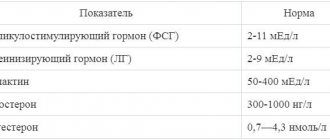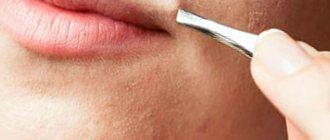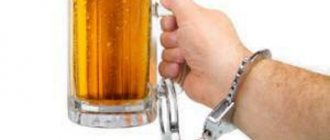Risk factors
Development problems
Typically, poor posture occurs during periods of rapid growth: at 5-8, and especially at 11-12 years. This is the time when bones and muscles increase in length, and the mechanisms for maintaining posture have not yet adapted to the changes that have occurred. Deviations are observed in the majority of children aged 7-8 years (56-82% of primary schoolchildren).
There are many factors that cause spinal curvature. For example, poor nutrition and illness often disrupt the proper growth and development of muscle, bone and cartilage tissue, which negatively affects the formation of posture. An important factor is congenital pathologies of the musculoskeletal system. For example, with bilateral congenital dislocation of the hip joints, an increase in lumbar curve may be observed.
An important role in the formation of deviations is played by the uneven development of certain muscle groups, especially against the background of general muscle weakness. For example, shoulders that are pulled forward are the result of predominant strength in the pectoral muscles and insufficient strength in the muscles that bring the shoulder blades together, and “dropping shoulders” are the result of insufficient work of the trapezius muscle of the back. An important role is played by overload of certain muscles with unilateral work, for example, incorrect position of the torso during games or activities.
All these reasons lead to an increase or decrease in the existing physiological curves of the spine. As a result, the position of the shoulders and shoulder blades changes, resulting in an asymmetrical position of the body. Incorrect posture gradually becomes habitual and can become fixed.
Incorrect posture
Sitting position. You should definitely pay attention to how the child sits at the table during classes: whether he puts one leg under him. Perhaps he is slouching or leaning to one side, leaning on the elbow of his bent arm.
Incorrect body position when sitting includes a seat in which the body is turned, tilted to the side or strongly bent forward. The reason for this situation may be that the chair is far away from the table or the table itself is too low. Or maybe the book the baby is looking at lies too far from him.
An asymmetrical position of the shoulder girdle can be formed as a result of the habit of sitting with the right shoulder raised high. Take a closer look: perhaps the table at which the child is studying is too high for him, and his left arm hangs down instead of lying on the tabletop (the same can happen if the table is round).
Standing position. The habit of standing with your leg set to the side and half-bent, like a crooked landing, develops an asymmetrical body position. This can aggravate lateral curvature of the spine caused by other reasons (for example, underdevelopment of the lumbosacral spine).
Physical inactivity...
Another important factor in the occurrence of postural disorders in children should be considered the notorious lifestyle. As sad as it may be, modern children have begun to move less. Starting from the age of 3, many children are sent to early development groups (primarily mental), then the process of acquiring knowledge increases, and during classes the child is forced to sit for a long time. In addition, children are introduced early to watching TV and video products; they can sit for hours playing computer games, and on the street, meeting with friends, instead of outdoor games, they enthusiastically discuss the features and codes of this or that electronic “shooter”. What can you do, if you want to be modern, follow the modern trends of life. However, a person must develop harmoniously, physical development should not lag behind. The weakness of the muscular corset in our children is primarily due to the lack of adequate physical activity, while with rapid growth, the strength of the abdominal and back muscles is simply necessary.
Recognize in time
In order to notice the deviation in time, parents need to more often pay attention to the position of the baby’s shoulders and back. His shoulders and shoulder blades should be at the same level. The correct position of the spine is also important - whether it is curved to the right or left, whether the subgluteal folds are located at the same level. These signs of lateral curvature can be seen by examining the child from the back while he is standing. When viewed from the front, it should be noted whether the collarbones and nipples are at the same level.
By looking at the side, you can identify disorders such as stooping or sluggish posture. This can be done by eye or using a special test. The child stands with his back to the wall so that the back of the head, shoulder blades, buttocks, and legs are in contact with the wall, and then takes a step forward, trying to maintain the correct body position. (This same test can be used as an exercise to develop good posture.)
If a curvature is detected, it is necessary to examine the baby's back, placing him on a flat, hard surface face down, arms along the body. If the curvature of the spinal column does not persist in the lying position, then we are only talking about a violation of posture, which can be corrected.
Muscle test . There are several simple tests to determine the state of the child’s muscular system. To do this, assess the baby’s ability to tense his back muscles for a long time. The child is placed face down on the couch so that the part of the body above the hips is suspended outside the couch, and the hands are on the belt (the child’s legs are held by an adult). Normally, children 5-6 years old can maintain a horizontal position of the body for 30-60 seconds, children 7-10 years old - 1 - 1.5 minutes, 12-16 years old - from 1.5 to 2.5 minutes. The development of the abdominal muscles is determined by the number of continuous repetitions of the transition from a lying position to a sitting position and back (while fixing the legs) at a slow pace, no more than 16 times per minute. The norm for preschoolers is 10-15 times, for children 7-11 years old - from 15 to 20 times, for children 16-18 years old - from 20-30 times.
If postural abnormalities and (or) weakness of the muscular system are detected, the child should be consulted by an orthopedic surgeon, traumatologist or physical therapist. The doctor examines the child, and if necessary, additional research methods are performed: radiography, electromyography, etc.
Recently, a new research method has emerged - topographic photometry, which allows not only to diagnose disorders of the musculoskeletal system, but also to evaluate the effectiveness of the treatment. The method is based on photographing the patient’s posture after the doctor marks the main landmarks on the child’s back with a marker.
Who is guilty
Three factors are to blame for frequent colds in children.
Least of all – medical. Well, Kolya’s nose will be blocked, his temperature will rise a little in the evening, but in two or three days everything will return to normal, and his parents will not even understand that he suffered the same infection that put his friends Sasha and Dasha to bed for a week. It’s just that Kolya’s immune system was familiar with the respiratory virus, it “recognized” it, “remembered” how it dealt with it the last time, and quickly developed the antibodies necessary to suppress this virus. And the immune systems of Sasha and Dasha met this virus for the first time, and it took them a lot of time and effort to cope with it. And here it becomes important how the doctors and parents of Sasha and Dasha behave. If they let their children “get sick to their heart’s content” and don’t push them into kindergarten or school early, then their immune systems will slowly study the virus and store information about it in their memory. And this will be a guarantee that the next time they encounter this infection, Sasha and Dasha will recover in two or three days.
But if the children who were not ill return to their groups and encounter the same virus again, it is possible that in a week they will again come down with symptoms of an acute respiratory infection. And if they catch a new one, then at least a double load will fall on their bodies. Every 10th child cannot withstand such a load, hence the “legs” of many allergic reactions. This is what is called a medical factor in the formation of frequent diseases. This factor is important in 8-15% of all cases of frequent ARVI.
The social factor is almost three times more important (40-45%). If a child receives adequate nutrition from an early age, develops harmoniously, and is observed by qualified physicians, the risk of developing recurrent diseases is minimized.
However, the main blame (at least 50%) for frequent colds lies with genetics. Each of us has our own type of immune response: either strong, mixed, or weak. And this feature of personal immunity is the same constant property as blood type.
An approximate set of exercises to strengthen the back and abdominal muscles
(can be performed from 4-5 years old until adolescence)
- Starting position: standing, hands on your belt. Spread your elbows, squeezing your shoulder blades together—inhale; return to IP - exhale.
- Starting position: standing, legs apart, hands to shoulders. Lean your body forward with your back straight - exhale; return etc. - inhale.
- Starting position: standing with a gymnastic stick in your hands. Raise the stick forward up - exhale; return to IP - inhale.
- Starting position - standing, stick in lowered hands. Sit down with your arms stretched forward; return to IP The back is straight.
- Starting position: standing, stick on shoulder blades. Lean forward with your arms stretched up (take out the stick); return to IP
- Starting position - lying on your back on an inclined plane, holding the bar of the gymnastic wall with your hands. Bend your legs, pull them towards your stomach - exhale; straighten - inhale.
- Starting position: lying on your back, arms along your body. Bicycle leg movements.
- Starting position: lying on your back, arms to the sides. Stretch your arms forward, lift your left leg and touch your arm, then your right leg. Accept i.p.
- Starting position: lying on your stomach, arms to the side. Raise your body, bending your thoracic spine (reach towards the ceiling); return to IP
- Starting position: lying on your stomach, hands on your belt. Raise your body up and raise your right leg - inhale, return to the i.p. - exhale. Repeat the exercise, raising your left leg straight.
- Starting position - lying on your stomach, arms bent at the elbow joints, holding a gymnastic stick on your shoulder blades. Raise your body by bending it through a gymnastic stick; return to IP Breathing is voluntary.
A set of exercises is performed daily in the morning or evening, depending on the child’s peak activity, but not earlier than an hour after a meal or 30-60 minutes before it. The pace is slow, you should start with 5 repetitions, increase to 10, the whole complex takes 30-40 minutes.
In order for the exercises to have a sufficiently accurate effect, they must be performed intensively, that is, above the children’s normal level of ability. First, easier exercises are given with a gradual transition to more difficult ones. Throughout the lesson, pauses are made several times to rest. It is recommended to rest in a lying position:
- lying on your back, legs slightly pulled up to your stomach, hands behind your head;
- lying on your stomach, your chin resting on your hands.
Oleg Malakhov Professor, Head of the Department of Pediatric Orthopedics at the Central Institute of Traumatology and Orthopedics named after. N. N. Priorova, MD Mikhail Tsykunov Professor, Head of the Department of Rehabilitation, CITO named after. N. N. Priorova, MD Svetlana Fedorova, rehabilitation specialist, employee of the Department of Rehabilitation, CITO named after. N. N. Priorova
What to do about your child’s “bad abilities”?
And the truth is: why get upset ahead of time? You hear this answer very often and think that there is nothing special in it - it means that the teacher asked someone else today, it was not his turn. You patiently wait for your child to be called to find out how he is doing. And so, they waited to their death - the first unsatisfactory grade appeared in the diary, and then another and another... You are surprised: the child does not miss lessons, does his homework conscientiously, why is there such poor performance? You go to school in bewilderment and learn unpleasant news from the teacher: the child has “poor abilities.”
But I really don’t want to admit to myself that this is true, and sometimes any excuses are used: “they find fault,” “they want to make money with extra lessons,” “the teacher’s poor preparation,” “they don’t allow you to speak out.” I can’t believe that your child is weaker than others, that he has worse abilities. The parent’s heart shrinks from the collapse of hopes, and resentment crawls out like a cold snake: but why do I have such a child?
Somewhere in the depths of your soul you feel sorry and understand that it is stupid to reproach a child that he was born this way, that he can’t do it like others, that he can’t do that. But you really want to fix the situation quickly, and you decide to start with threats: “Now you will forget about my computer and TV!”
Remember, a child with “poor abilities” especially needs parental help and your sympathy. After all, he himself sees that he perceives the teacher’s material worse than others, remembers it poorly, answers incorrectly, and yet he is in a children’s group, where the spirit of competition is especially acute. Lagging children from an early age accumulate numerous defeats and hide their suffering. In class, they try to sit on the last desks, without attracting the teacher’s attention, so as not to embarrass themselves once again in front of other students. And the relationships of classmates depend on the teacher’s assessment! Such children should be treated with special sympathy, attention and affection - they are sufferers at this stage.
A vicious circle of disadvantage is formed: low grades in school reinforce general negative expectations, and these in turn give rise to results and grades at a descending level. Failure affects development: learning interest disappears, self-esteem is low, and the teenager looks for friends outside of school, tries to assert himself in the company of people like himself, dysfunctional children of disappointed parents.
During this difficult period for a teenager, it is very important not to drive him out of home, but, on the contrary, to create home comfort and support him with compassion and faith in future success. Never get upset about “bad abilities” yourself. Life experience confirms that the fate of less gifted children is no worse than that of capable ones, and sometimes even much more successful. Parents should know their child well: his interests and abilities, find out what he does best. “Bad abilities” sometimes, in anticipation, such talent is revealed that you are amazed. Don't think that if a child does better than others in math, that this is proof of obvious ability. Life tests you not only according to the school curriculum!
If you are lucky with the wisdom of your teacher, then his goodwill and your support can create a miracle even with small abilities. What to do if the teacher’s assessment is underestimated due to negative expectations, that is, a negative attitude? The main thing is knowledge, and you must convince your child of this! It's never too late to mobilize all your strength and surprise your teacher with a good answer or an excellent test. Having achieved success, do not leave the teenager unattended, constantly teach him to see progress towards the intended goal, rejoice with him, develop his strengths and improve his weaknesses.
Remember that abilities can be inhibited, and it happens that by delving into the child’s mental state, you can find out the reason for poor performance and try to free them. Often a child gets lost when he feels increased attention to himself, he is afraid that he will say the wrong thing, write the wrong word, and when he makes a mistake, he can completely lose heart. In order not to experience trouble, he withdraws and begins to feel inferior.
There are children with painful pride - they long to be first, and when they don’t succeed, they are very upset. It happens that children’s “poor abilities” are caused by elementary fatigue. Their nervous system is so special that it cannot withstand prolonged stress and mobilization. Such teenagers, as a rule, start out successfully, but quickly fizzle out and lose interest.
There are also children with strange abilities: sometimes everything works out for them, and they cope with tasks no worse than others, and at times they show obvious lag. These guys, as a rule, are potentially gifted, waiting for their job and their time.
Children who come to school from home and are not accustomed to group communication can be fearful for a long time, showing silent stubbornness and not accepting the teacher’s explanations.
Any case of a lag from the average level requires careful analysis. Sagging children should be constantly encouraged, avoiding even the hint that their abilities are below average. Find activities for them where they can perform well, and be sure to praise them. Even for wrapping a book beautifully or putting an exemplary order in your room.
It is categorically not recommended to encourage a child in front of other children, belittling them in some way: “Why are you a coward? Show that you are no worse than others!” It is undesirable to push with examples: “Aren’t you ashamed? Everyone can, but you can’t!” It is undesirable to remind a child that he has poor abilities: “Where is your intelligence?”, “You know that you have a bad memory.”
DO NOT insult with words that emphasize inferiority: “Who are you so stupid?”, “Why are you so slow-witted?” DO NOT - scold about “bad abilities.” DON’T allow a child to feel inferior. NEVER KICK A TEENAGER OUT OF HOME!
Teach hard work, balance, perseverance, resourcefulness, determination, and give positive examples from the lives of great people. Do not forget to praise if the child has achieved success in something, do not let inferiority establish itself. Take care of yourself and your children, bring them more joy.
Tags: communication, abilities, school, assessment, child, psychology








